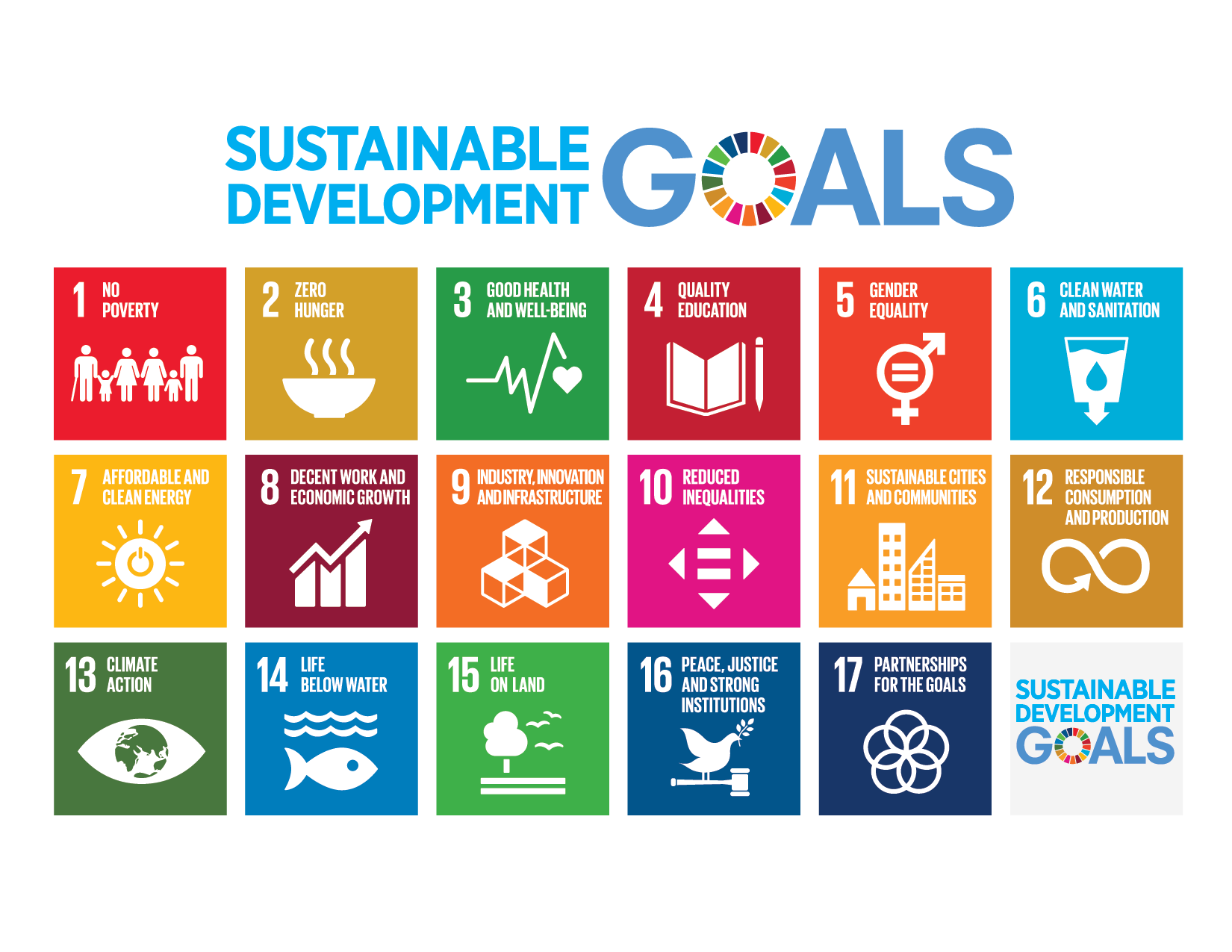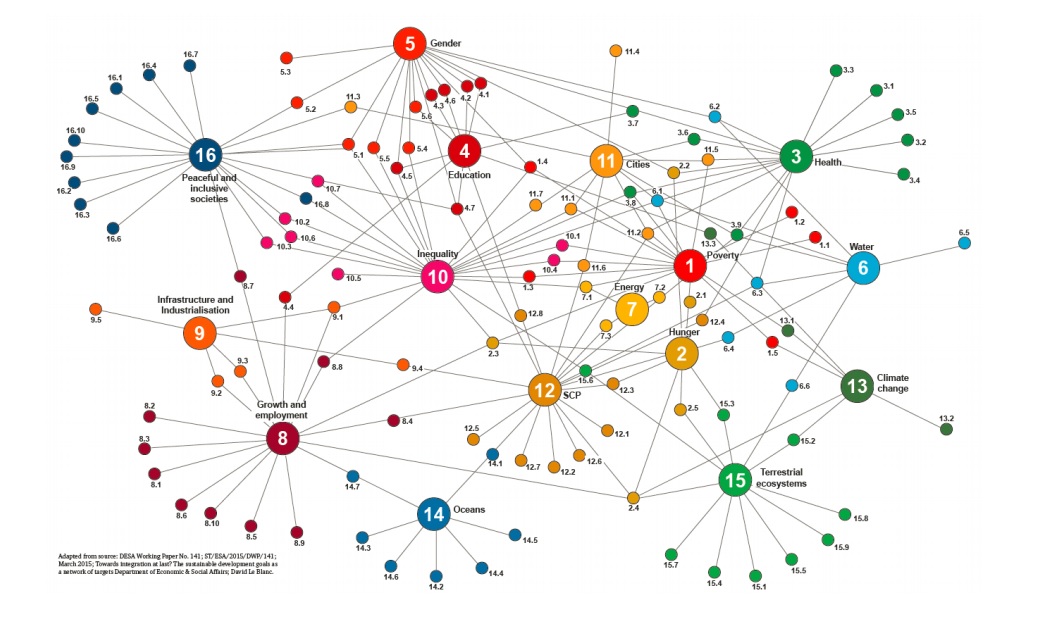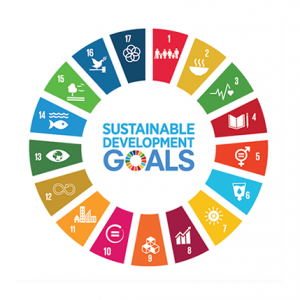SDGs
Sustainable Development Goals
The University of Kent are signatories of the Sustainable Development Goals Education Accord and committed to embedding the 17 goals across everything we do.
The United Nations Sustainable Development Goals (SDGs) are a collection of 17 interlinked global goals designed to be a “blueprint to achieve a better and more sustainable future for all”. The SDGs were set in 2015 by the United Nations General Assembly and are intended to be achieved by the year 2030. The UN’s transformative vision calls for a just, equitable, tolerant, open, and socially inclusive world in which the needs of the most vulnerable are met and no one is left behind.

Learn more about the individual goals and the targets and KPIs that underpin them
| SDG 1 aims to end poverty in all its forms everywhere
Link: SDG 1 |
|
| SDG 2 aims to end hunger, achieve food security, and improved nutrition, and promote sustainable agriculture
Link: SDG 2 |
|
| SDG 3 aims to ensure healthy lives and promote well-being for all at all ages
Link: SDG 3 |
|
| SDG 4 aims to ensure inclusive and equitable quality education and promote lifelong learning opportunities for all
Link: SDG 4 |
|
| SDG 5 aims to achieve gender equality and empower all women and girls
Link: SDG 5 |
|
| SDG 6 aim to ensure the availability and sustainable management of water and sanitation for all
Link: SDG 6 |
|
| SDG 7 aims to ensure access to affordable, reliable, sustainable and modern energy for all
Link: SDG 7 |
|
| SDG 8 aims to promote sustained, inclusive and sustainable economic growth, full and productive employment and decent work for all
Link: SDG 8 |
|
| SDG 9 aims to build resilient infrastructure, promote inclusive and sustainable industrialization and foster innovation
Link: SDG 9 |
|
| SDG 10 aims to reduce inequality within and among countries
Link: SDG 10 |
|
| SDG 11 aims to make cities and human settlements inclusive, safe, resilient, and sustainable
Link: SDG 11 |
|
| SDG 12 aims to ensure sustainable consumption and production patterns
Link: SDG 12 |
|
| SDG 13 aims to take urgent action to combat climate change its impacts
Link: SDG 13 |
|
| SDG 14 aims to conserve and sustainable use the oceans, seas and marine resources for sustainable development
Link: SDG 14 |
|
| SDG 15 aims to protect, restore and promote sustainable use of terrestrial ecosystems, sustainable manage forests, combat desertification, halt and reverse land degradation, and halt biodiversity loss
Link: SDG 15 |
|
| SDG 16 aims to promote peaceful and inclusive societies for sustainable development, provide access to justice for all, and build effective, accountable, and inclusive institutions at all levels
Link: SDG 16 |
|
| SDG 17 aims to strengthen the means of implementation and revitalize the global partnership for sustainable development
Link: SDG 17 |
Attributes of the SDGs
The SDGs provide a common language to communicate and discuss issues around sustainability and sustainable development in a global context.
The environmental, social, and economic dimensions of the SDGs take into consideration that all three dimensions need to be balanced within sustainable development policy
The stacked rings representation of the SDGs places the biosphere at the foundation recognising that which is the aggregation of all living organisms on the Earth and the physical environment where they dwell, i.e., land, water and atmosphere. The middle tier is composed of the SDGs representing social interactions along with issues of inequality and injustice. SDGs related to the economy represent the production and trading of goods and services and they are supported by the biosphere and society. This nested model recognises that a healthy and sustainable economy depends on a healthy, just, equitable society and that that in turn can only exist within a healthy planet. By expressing the goals in this way we can better understand how each one relates to the bigger picture as well as its relevance within academic disciplines.

The SDGs provide a useful starting point for staff and students interested in including sustainability content and challenges in modules, courses and practice. The breadth of the SDGs and the depth of the targets within each goal means that they can resonate with all academic disciplines and subject areas.
While individual goals represent an entry point into disciplinary consideration, it is important to consider the impacts of action on one goal on the other goals.
Each of the 17 goals is underpinned by a number of targets. There are 169 targets in total and this diagram shows where these targets intersect with other goals.

For example, Target 2.4 relates to sustainable production of food. This links to 5 of the SDGs in the following ways:
Goal 8 (Decent work and economic growth) – fair prices for producers, ethical supply chains
Goal 15 (Life on land) – sustainable land management practices
Goal 2 (Zero hunger) – equitable distribution of food
Goal 12 (Responsible consumption and procurement) – sustainable supply chains
